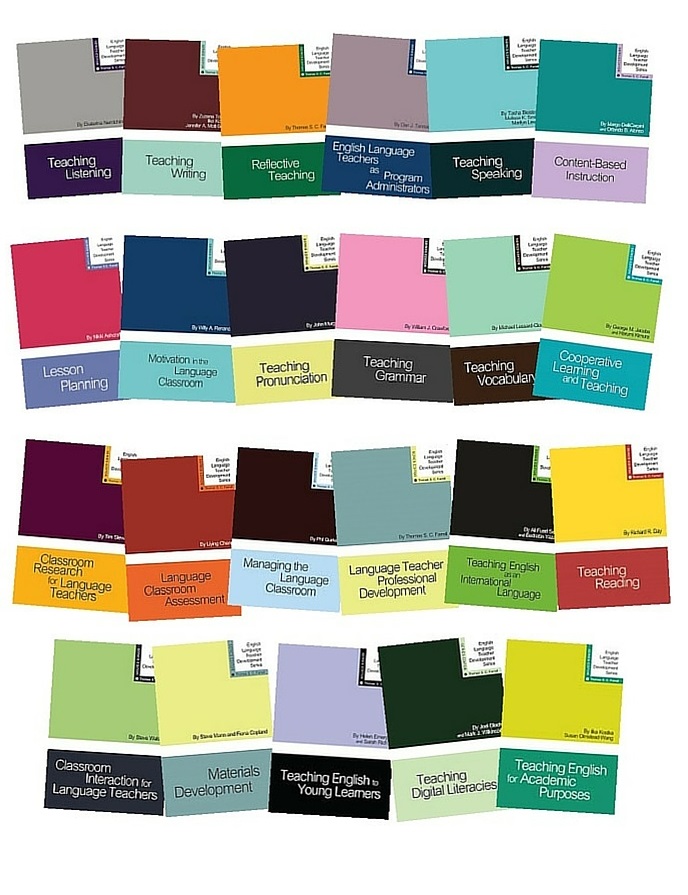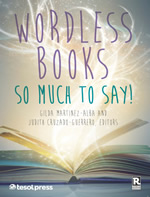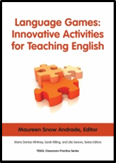Quick Tip: 3 Ways to Boost Collaboration in Your Class
by Olena Zastezhko
Audience: ESL teachers working with low-intermediate-advanced students
Getting students to work together in class on constructing knowledge and solving problems has proven to be beneficial because it stimulates learner autonomy and turns students into active participants in the learning process (Murphey & Jacobs, 2000). Students learn to trust themselves and their peers, and not rely solely on the teacher as the only source of knowledge. Thus, collaboration is an integral component of active learning. The following activities are classroom tested and aimed at improving student collaboration in class.
1. DOs and DON’Ts
Purpose: to elicit what students already know about a topic or do a review.
Have a topic in mind that you want your students to discuss (e.g., “How to write an essay”).
- Divide students into small groups and give each group a large piece of paper.
- Ask them to create a chart similar to the one shown in Table 1.
Table 1. Writing an essay example
|
DO |
DON'T |
| Include a clear thesis statement |
Add new info in the conclusion |
| Relate each topic sentence to the thesis statement |
Plagiarize |
- Ask students to brainstorm ideas about what they should do and should not do when writing an essay, and write their ideas in the chart.
- When all groups are done, have them put the charts on the walls and explain their ideas to classmates. This leads to a good whole-class discussion in which students are themselves the experts.
2. YES – NO Chart
Purpose: to promote self-assessment and peer teaching.
As in the previous activity, students are asked to complete a chart on a specific topic (see Table 2), but the focus is on individual rather than collective knowledge. Students have a great opportunity to receive extra explanations from peers who are knowledgeable about the topic. This activity works well right before a test or other formal assessment.
Table 2. Note-taking methods example
|
I know well |
I'm not sure... |
| How to use symbols and abbreviations |
What is the Cornell method? |
| How to use an outline for notes |
What words I can skip |
- Ask students to evaluate their understanding of different aspects of the topic.
- Have them create a chart (see Table 2 as an example) and fill it out.
- Ask students to walk around the classroom and find classmates who can explain to them items from their “I’m not sure…” column. Students can organize mini study groups based on the issues they discuss.
3. Jigsaw
Purpose: to stimulate responsibility for independent learning and construct knowledge together.
This activity works great for introducing a new topic that can be broken into several parts. Here are the steps to follow:
- Put students into groups according to the number of “jigsaw pieces” a topic is broken into.
- Each student studies just one piece of information about the topic.
- Next, students get together with students from other groups who studied the same piece of information to discuss it and do a short task to check understanding.
- Then students get back to their original group and explain their piece of information to the other group members so that everyone has at least a general understanding of the entire topic.
- Finally, students complete a group task to check their understanding. The task may be graded to ensure that all group members do their work diligently.
Below are some topics where the Jigsaw activity can be used quite effectively:
Table 3. Jigsaw examples
|
Topic/Skill |
Jigsaw Pieces |
Text Comprehension
The Passive Voice |
• Difference between the active and passive forms
• Formation
• Use of the by-phrase |
| Relative Clauses |
• Use in a sentence and pronouns
• Restrictive clauses
• Nonrestrictive clause |
| Text Comprehension |
A text divided into several independent parts |
| Vocabulary Knowledge |
A vocabulary list divided into several parts |
Academic Lecture Comprehension
(may require some adjustment) |
A recorded lecture divided into several independent parts (students may listen to it at home or access it from their smartphones if it’s posted online) |
Conclusion
The activities discussed above will help you improve the collaborative environment in your classroom. Their most important advantage is that they provide “frameworks,” and thus are highly versatile and can be adopted for teaching a variety of topics across all skills. These activities can even be used multiple times with the same class and still feel new due to the variety of topics that can be learned and reviewed with their help.
Reference
Murphey, T., & Jacobs, G. M. (2000). Encouraging critical collaborative autonomy. JALT Journal 22(2), 228–244.
Olena Zastezhko is an IEP instructor at the University of Dayton, where she teaches a variety of ESL classes to pre-academic students and coordinates IEP tutoring.
TESOL Blogs
Interested in writing a blog for TESOL?
Read the submission guidelines and send us your post!
Check out the latest TESOL Blogs:
|
Teaching Elementary-Age ELs the Hidden Curriculum, by Judie Haynes
 What is the hidden curriculum? This term encompasses various characteristics of schooling that “everybody knows.” It usually consists of a wide variety of social skills, such as interactions with peers and teachers, and includes the fundamental values and beliefs of a school community. This hidden curriculum needs to be learned by ELs in order for them to succeed socially and academically in school. What is the hidden curriculum? This term encompasses various characteristics of schooling that “everybody knows.” It usually consists of a wide variety of social skills, such as interactions with peers and teachers, and includes the fundamental values and beliefs of a school community. This hidden curriculum needs to be learned by ELs in order for them to succeed socially and academically in school.
How do your ELs discover this underlying curriculum? Do you teach it directly or hope that they will acquire socially appropriate behavior and language simply by being with native English speakers? Read More. |
|
Can We Really “Teach Peace”?, by Kristen Lindahl
 In light of recent violence in the world, I have been pondering the role of educators in this shifting paradigm. As members of an international organization, TESOL professionals can be found in every part of the globe, working with all types of people across differences in age, culture, ethnicity, gender, language, race, and religion. As a group, we are continually touched by events outside of our classrooms, and this requires us to be aware of economic, political, and social affairs that impact us as well as our students. Read More. In light of recent violence in the world, I have been pondering the role of educators in this shifting paradigm. As members of an international organization, TESOL professionals can be found in every part of the globe, working with all types of people across differences in age, culture, ethnicity, gender, language, race, and religion. As a group, we are continually touched by events outside of our classrooms, and this requires us to be aware of economic, political, and social affairs that impact us as well as our students. Read More.
|
|
5 Ways to Make the Most of Written Feedback, by Nathan Hall
 Do you remember getting papers back from your English or composition teachers that were covered in red ink? Did you take the time to decode each individual marking, consider every error, and diligently redraft your paper until it was flawless? Really? You did? Because I remember scanning for my grade, then fixing the mistakes marked by symbols as disinterestedly as if they were math problems—but only when revisions were required. The most frustrating part was that I made mistakes when I knew the correct rule, but somehow I just tapped the wrong key or picked the wrong word. Read More. Do you remember getting papers back from your English or composition teachers that were covered in red ink? Did you take the time to decode each individual marking, consider every error, and diligently redraft your paper until it was flawless? Really? You did? Because I remember scanning for my grade, then fixing the mistakes marked by symbols as disinterestedly as if they were math problems—but only when revisions were required. The most frustrating part was that I made mistakes when I knew the correct rule, but somehow I just tapped the wrong key or picked the wrong word. Read More.
|
|
3 WebQuests to Engage Your ELLs With Content!, by Sherry Blok
 Tired of fighting against the current? Students love their phones and want to engage in online activity, so why not put those cellphones to good use? WebQuests have proven to be highly effective to: Tired of fighting against the current? Students love their phones and want to engage in online activity, so why not put those cellphones to good use? WebQuests have proven to be highly effective to:
- Engage students with content
- Improve reading comprehension
- Improve reading skills, such as skimming and scanning
- Develop information-literacy skills
- Develop computer-literacy skills
- Develop problem-solving skills
- Develop ability to work in teams
Read More. |
TESOL Bookstore

Featured Resources from TESOL Press
English Language Teacher Development Series: PDF Bundle
Series Editor: Thomas S. C. Farrell

What's the latest research, and how do I use it in my classroom? Keeping updated is an ongoing task for a profession that continuously reinvents itself. These short, accessible reference tools are of immediate relevance to practicing teachers in the ESL, EFL, EIL, and ESOL classrooms. Ideal for ESOL master's programs and skills courses. Get all 23 titles in PDF format with this series bundle.
 Wordless Books: So Much to Say!
Wordless Books: So Much to Say!
Gilda Martinez-Alba and Judith Cruzado-Guerrero, Editors
Enable your students to be successful regardless of their literacy levels. Wordless books help to develop oral language, listening, vocabulary, and so much more! With wordless books, K–12 and adult students can be authors and write stories that they interpret from the pictures. Includes additional online resources and editable rubrics.
 Language Games: Innovative Activities for Teaching English
Language Games: Innovative Activities for Teaching English
Maureen Snow Andrade
Part of the Classroom Practice Series, this volume contains a variety of games used in language classrooms around the globe, reflecting different contexts and cultures. Chapters demonstrate how both theory and practice inform teaching approaches, and games focus on reading, writing, listening, speaking, grammar, critical thinking and more.